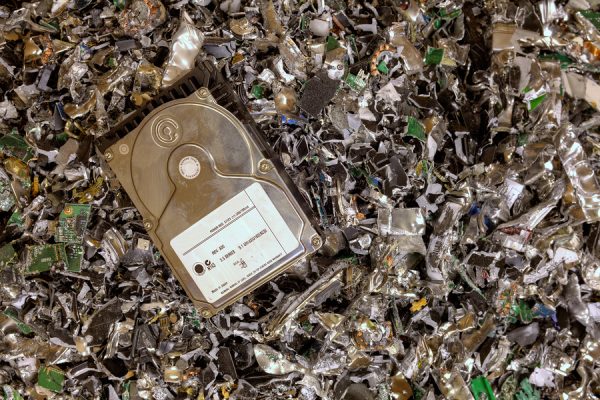
Every business has a responsibility to protect the data that they collect and store—especially if it is highly sensitive information. Unfortunately, many companies make the mistake of getting rid of old IT assets and forgetting to protect the data that is stored on them. If the data is not properly destroyed, it could fall into the wrong hands and your company could face severe consequences as a result of this mistake. To ensure this doesn’t happen to your business, it’s recommended that you learn about the different ways that data can be destroyed.
Destroying Paper Media
When you think of data, your mind probably immediately goes to electronic data. However, it’s important to protect the data stored on paper just as you would protect data stored electronically. The traditional way to destroy paper media is by shredding it, but there are several other options available if the paper media contains highly confidential information. Companies have the option of incinerating, pulverizing, or macerating paper media that is highly sensitive. You’re probably already familiar with the concept of incineration, but what do the other two methods entail? Pulverizing paper simply means crushing it until it has turned into a fine powder, whereas maceration is the process of using chemicals to convert the paper into pulp. All three of these methods are incredibly effective ways of destroying paper media that have highly sensitive information. But, if the paper does not contain sensitive information, you should be fine just shredding it.
Unfortunately, it’s a bit harder to destroy electronic data since you can’t simply destroy the paper that it is printed on. There are three different methods that are typically used to destroy electronic data: physically destruction, demagnetization, and overwriting.
Physical Destruction
Companies that choose to destroy their data using this method will need to physically break any device that contains data, including hard drives, flash disks, and other IT equipment. If done properly, physical destruction should be enough to ensure that no one can recreate or access the data on the destroyed devices. However, this is one of the most expensive and least environmentally friendly methods of data destruction.
It’s important to note that the data will still be available on the device if it has only been partially destroyed. One IT expert uses an example of drilling holes through a hard drive to give you a better idea of how physical destruction can go wrong. The holes are enough to destroy to ensure that no one can use the hard drive, but the data may still be there if you don’t drill holes through every inch of the hard drive.
You should never attempt to physically destroy e-waste on your own for two reasons. First, you may not know the proper way to destroy the device so the data is completely destroyed. But, that’s not all. Physically destroying devices can be dangerous, too. There are a number of different toxic substances inside e-waste that could be released into the environment if you destroy these devices outside of a special facility.
Demagnetization
The demagnetization process, which is formally known as degaussing, involves the removal of the magnetic field of a hard drive or other storage disk. E-waste recyclers must complete this process using a special tool called a degausser, which quickly erases all of the data on the storage medium. Degaussing is preferred over other destruction methods because it is quick and effective. Once a device has been degaussed, the data cannot be read or recovered, so it’s the ideal method for companies that are handling very sensitive information.
But, degaussing must only be performed by professionals at an e-waste recycling facility. Even if your company can afford the expensive tool that is needed to demagnetize your IT assets, it’s not a good idea to try this on your own. It’s possible that you could accidentally demagnetize—and therefore erase the data on—any devices that are nearby while you use the degausser. Once the device has been degaussed, there’s no way to recover the information, which is why making a mistake can be so damaging. For this reason, it’s best if you leave this job to the professionals and hire an e-waste recycler that uses this method of data destruction.
Overwriting Data
The third and final method that is used to destroy electronic data is overwriting, which is the process of writing new data on top of the existing data that you would like to destroy. However, it’s important to overwrite the data multiple times if you want to ensure that it cannot be accessed or recreated by someone else.
If you work with an e-waste recycler, you must find out what type of overwriting they will perform on your data. Simply saying that they will overwrite your data is not enough—you have to know precisely how many times they will overwrite it. For example, the Department of Energy (DOE) suggests overwriting data at least three times to ensure it has been erased. But, the Department of Defense (DOD) recommends that you overwrite data between 7-10 times. The best e-waste recyclers will follow the NIST 800-88r1 Guidelines for Media Sanitization, which is considered the current standard in the industry. Before letting an e-waste recycler destroy your electronic data, make sure you find out what they mean by “overwriting.”
At ERI, we take the destruction of your data seriously, which his why we offer both software based and physical destruction of your electronic data. We also provide a live video feed of the data destruction so clients can watch us work to ensure we are delivering on our promises. For more information on recycling electronics, or to request a quote from ERI, contact us today.